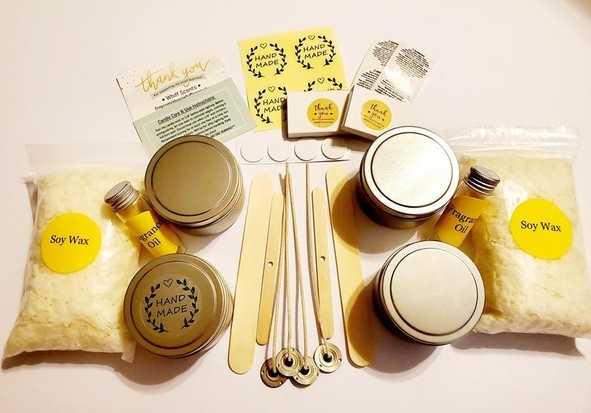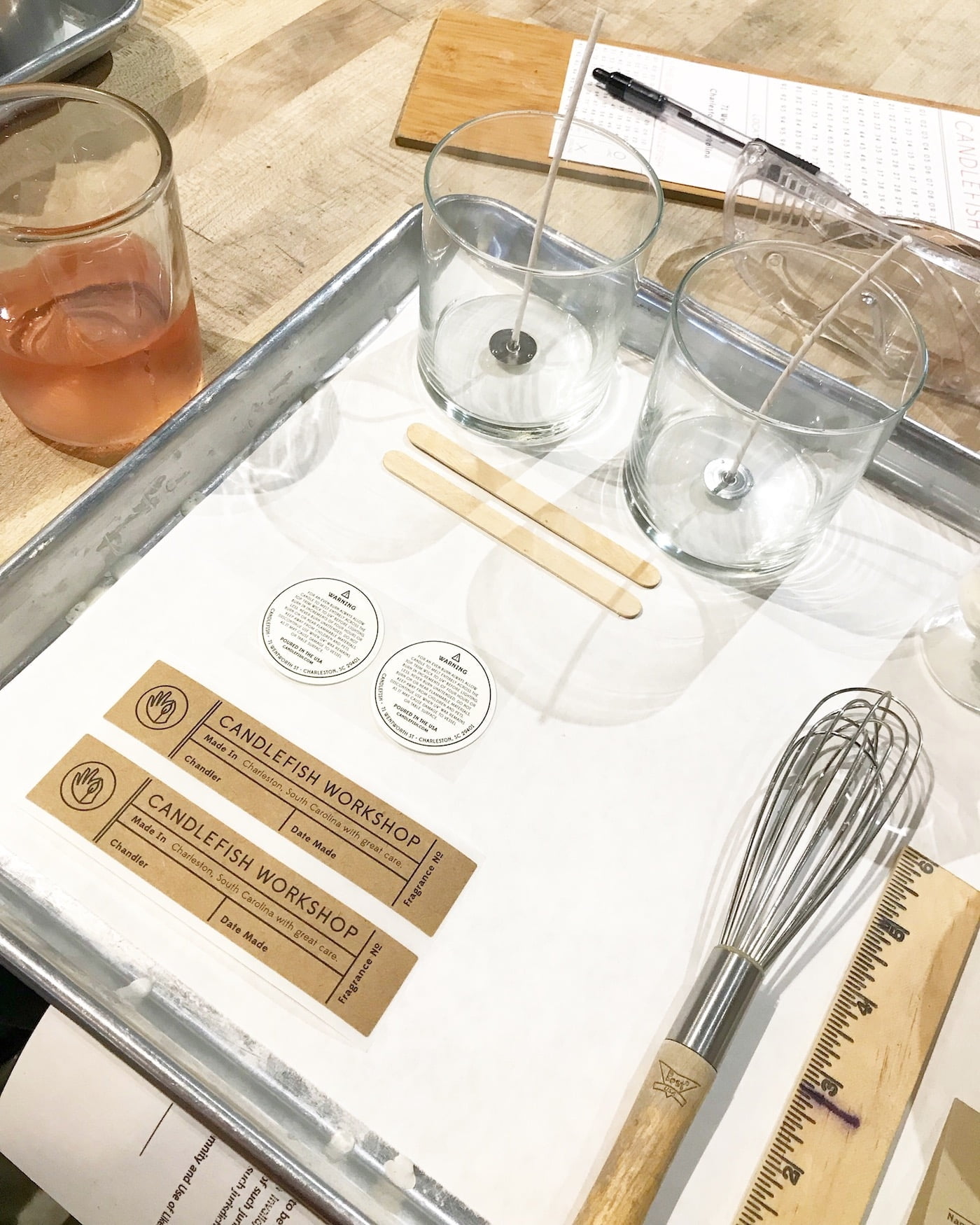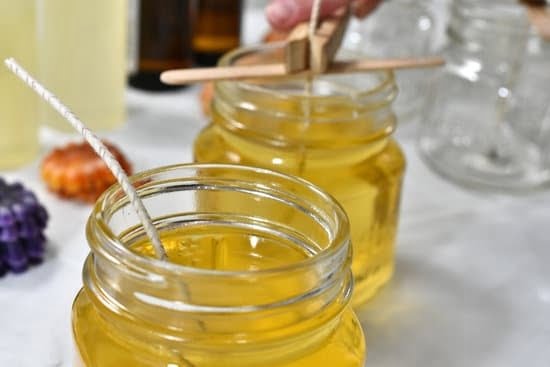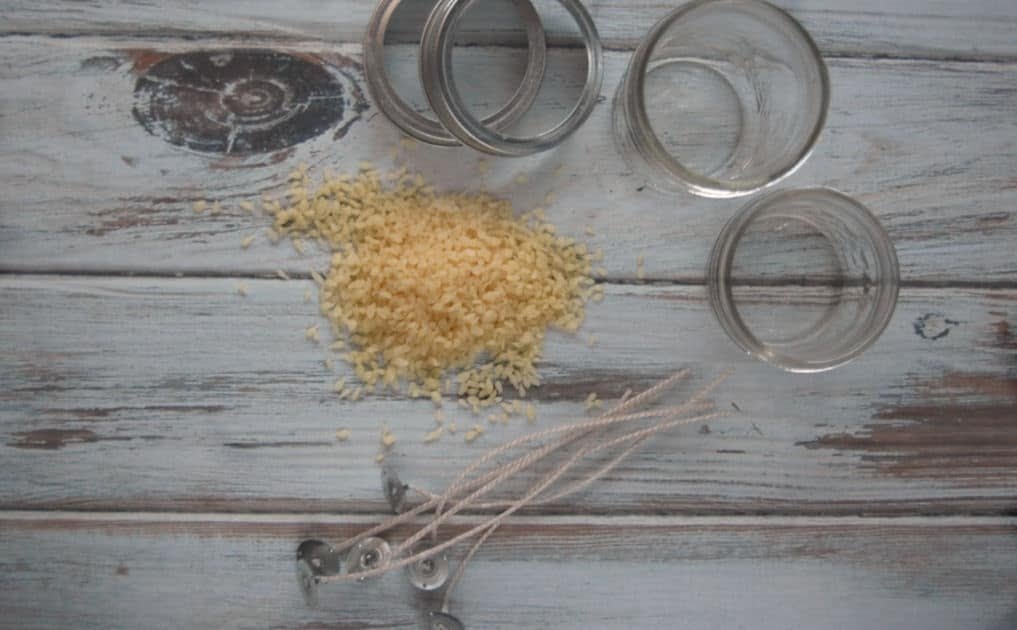Candle making measurements are a fundamental aspect of crafting high-quality and consistent candles. The precise measurement of ingredients such as wax, fragrance oils, and dyes plays a crucial role in determining the final product’s appearance, burn time, scent throw, and overall quality. Even minor discrepancies in measurements can lead to variations in the candles’ performance and aesthetics.
Accurate measurements not only ensure a successful candle-making process but also contribute to achieving desired results consistently. Whether you are a novice or an experienced chandler, understanding the importance of precise measurements is essential for producing candles that meet your expectations and those of your customers. From choosing the right type of scale to measuring ingredients with precision, every step in candle making requires careful attention to detail.
In this comprehensive guide on candle making measurements, we will delve into the significance of precise measurements in creating candles. We will explore different types of measurements commonly used in candle making, discuss the tools needed for accurate measuring, provide a step-by-step guide on how to measure ingredients effectively, troubleshoot common measurement mistakes, offer tips for beginners looking to master this skill, and even touch upon advanced techniques for achieving professional results.
Stay tuned as we uncover the secrets to perfecting your candle making through accurate measurements.
Importance of Precise Measurements
Accurate measurements play a crucial role in the art of candle making. The precision in measuring ingredients such as wax, fragrance oils, and dyes directly impacts the quality and consistency of the final product. When it comes to crafting candles, even a slight deviation from the required measurements can lead to variations in appearance, texture, burn time, and scent throw. Therefore, understanding the importance of precise measurements is essential for achieving the desired results.
- Quality: Ensuring accurate measurements helps in creating candles that burn evenly and cleanly without any issues like tunneling or sooting. Consistency in measurements leads to uniformity in texture and appearance across multiple batches of candles.
- Aroma: When measuring fragrance oils accurately, you can achieve the perfect scent intensity in your candles. Adding too much or too little fragrance oil can result in overpowering or weak scents that may not appeal to your customers.
- Color: Proper measurements of dyes or colorants ensure that your candles have consistent and vibrant colors. Incorrect measurements can lead to uneven coloring or fading over time.
To maintain precision in candle making measurements, it is important to use a combination of weight, volume, and temperature measurements depending on the specific ingredient being used. Each type of measurement serves a unique purpose and contributes to the overall success of your candle-making process. By understanding how these different measurements interact with one another, you can create high-quality candles that meet both aesthetic and functional standards with ease.
Common Types of Measurements in Candle Making
Candle making requires precise measurements to ensure the quality and consistency of the final product. Whether you are a beginner or an experienced candle maker, understanding and accurately measuring different components like wax, fragrance oils, and dyes is essential for successful candle making.
In candle making, the most common types of measurements include weight, volume, and temperature. Weight measurements are crucial when determining the amount of wax needed for a specific candle size or the precise quantity of fragrance oil to add. Volume measurements come into play when calculating the liquid components of a candle such as fragrance oils and dyes. Temperature measurements are important during the melting process of wax and additives to achieve the perfect consistency for pouring.
To ensure accurate measurements in candle making, it is imperative to have the right equipment on hand. Essential tools include a digital scale for precise weight measurements, a thermometer to monitor temperatures during melting and pouring, and measuring cups or beakers for volume calculations. These tools will not only help maintain consistency but also aid in troubleshooting any issues that may arise during the candle making process.
Here are some useful tips to keep in mind when dealing with different types of measurements in candle making:
- Use a dedicated digital scale for measuring wax and additives to ensure accuracy
- Keep track of temperatures using a thermometer throughout the entire candle making process
- Use calibrated measuring cups or beakers for volume measurements to avoid discrepancies
By following these guidelines and mastering various measurement techniques, you can create high-quality candles with precision every time.
| Measurement | Importance |
|---|---|
| Weight | Determining wax quantity and fragrance oil amount accurately |
| Volume | Calculating liquid components like fragrance oils and dyes precisely |
| Temperature | Maintaining proper consistency during melting and pouring phases |
Equipment Needed for Accurate Measurements
Scales
One of the most crucial tools in candle making measurements is a reliable scale. Scales help in accurately measuring the weight of wax, fragrance oils, and any other ingredients used in the candle-making process. Digital scales are recommended for their precision and ease of use. Make sure to calibrate your scale regularly to ensure accurate measurements.
Thermometers
Temperature plays a significant role in candle making, especially when working with wax. A quality thermometer is essential to monitor and control the temperature during various stages of the melting and pouring process. This helps in achieving the right consistency and texture for your candles. Ensure you have both a candy thermometer for measuring high temperatures and an infrared thermometer for quick readings.
Measuring Cups
For liquid ingredients like fragrance oils and dyes, measuring cups are indispensable. Graduated measuring cups ensure precise measurements and help maintain consistency in your candle recipes. Look for heat-resistant glass or plastic measuring cups with clear markings for easy reading. Investing in a set of measuring spoons can also be beneficial for smaller quantities.
Having these essential tools on hand will not only make your candle making process more efficient but also result in high-quality and consistent candles every time. By using the right equipment for accurate measurements, you can elevate your candle making skills and create beautiful creations that light up any space with warmth and ambiance.
Step-by-Step Guide to Measuring Ingredients
When it comes to candle making, accurate measurements play a crucial role in ensuring the quality and consistency of the final product. Whether you are a beginner or an experienced candle maker, understanding how to measure ingredients properly is essential for successful candle making. The right proportions of wax, fragrance oils, and dyes can make a significant difference in the appearance and scent of your candles.
One of the most common measurements in candle making is weighing ingredients. Using a digital scale can help you get precise measurements for your wax, fragrance oils, and dyes. Measuring by weight allows you to follow recipes accurately and replicate successful batches consistently. Additionally, measuring by weight is more reliable than measuring by volume since different types of wax can have varying densities.
Another important aspect of measuring ingredients in candle making is temperature. It is crucial to measure the temperature of your wax when adding fragrance oils and dyes to ensure they are added at the correct temperature range specified in your recipe. Using a thermometer that is specifically designed for candle making can help you achieve optimal results in terms of scent throw and color intensity.
| Measurement Type | Importance |
|---|---|
| Weight | Allows for precise replication of batches |
| Temperature | Ensures proper mixing of fragrance oils and dyes |
Troubleshooting Measurement Mistakes
When it comes to candle making, accurate measurements play a crucial role in the final product’s quality and consistency. Even a slight deviation in measurements can alter the texture, burn time, and fragrance of your candles. Understanding common errors in candle making measurements and how to rectify them is essential for successful candle making.
To help you troubleshoot measurement mistakes in candle making, here are some common errors you might encounter:
- Incorrect weighing of ingredients: Using inaccurate measurements on a scale can lead to an imbalance in the wax blend, affecting the candle’s burn time and scent throw. Make sure to calibrate your scale regularly and double-check weight measurements before adding any ingredients.
- Inaccurate temperature readings: Temperature plays a vital role in candle making, especially when adding fragrance oils or dyes. Using a thermometer that is not calibrated correctly can result in overheating or underheating your wax, affecting the overall quality of your candles.
- Overpouring or underpouring wax: Filling your containers with too much or too little wax can impact the appearance and performance of your candles. Using measuring cups with clear markings or pour spouts can help ensure consistent pouring each time.
When faced with these measurement mistakes, there are ways to rectify them for successful candle making:
- Adjusting the fragrance load: If you’ve added too much or too little fragrance oil to your wax, you can adjust the scent by adding more wax to dilute it or more fragrance oil to intensify it. Keep track of your measurements to ensure consistency across batches.
- Reheating and remixing: If you’ve overheated your wax or mixed ingredients unevenly due to incorrect temperatures, you can always reheat the mixture gently and stir thoroughly to achieve a homogenous blend before pouring into molds.
- Trimming excess wax: In case of overpouring wax into containers, carefully trim off any excess wax after cooling using a knife or scissors. This will help maintain a clean aesthetic and prevent uneven burning during future use.
By addressing these common measurement errors and knowing how to rectify them effectively, you can achieve consistent results in your candle making journey. Remember that practice makes perfect, so don’t be discouraged by initial mistakes – learn from them to improve your skills as a candle maker.
Tips for Beginners
When it comes to candle making, precise measurements play a crucial role in ensuring the quality and consistency of your final product. For beginners venturing into the world of candle making, mastering the art of accurate measurements is essential for creating beautiful candles that burn evenly and emit delightful scents.
One important tip for beginners delving into candle making measurements is to invest in high-quality equipment. Scales, thermometers, and measuring cups are indispensable tools that can help you achieve accurate measurements for your ingredients. With the right equipment, you can ensure that you are adding the correct amount of wax, fragrance oils, and dyes to your candle mixtures, ultimately leading to successful results.
Another valuable piece of advice for novice candle makers is to follow a step-by-step guide when measuring ingredients. Whether you are working with wax, fragrance oils, or dyes, it is crucial to carefully measure each component according to the recipe instructions. By following a detailed process for measuring ingredients, you can avoid mistakes and inconsistencies that may affect the quality of your candles. Remember, precision in measurement is key to achieving desired results in candle making.
Advanced Techniques for Precise Measurements
In candle making, precision in measurements is key to creating high-quality and consistent candles. The accurate measurement of ingredients such as wax, fragrance oils, and dyes can greatly impact the final product’s appearance, burn time, and scent throw. By implementing advanced techniques like the double-boiler method and using digital scales, candle makers can elevate their craft to professional levels.
The double-boiler method is a technique commonly used in candle making to melt wax gently and evenly without scorching or overheating. This method involves placing wax in a heat-safe container within a larger pot of water that is heated on the stove. The indirect heat helps prevent hot spots and ensures a smooth consistency for the wax.
Additionally, using digital scales with precise measurements can make a significant difference in the accuracy of ingredients added to the candle mixture. Digital scales offer clear readings and allow for precise amounts of each component to be added, resulting in consistent batches of candles.
For beginners looking to improve their candle making skills, focusing on mastering proper measurements is essential. Understanding how weight, volume, and temperature measurements affect the outcome of candles can lead to more successful results.
By following a step-by-step guide for measuring ingredients accurately and learning how to troubleshoot common measurement mistakes, beginners can develop their skills and create candles that meet their desired specifications. Practice, patience, and attention to detail are key elements in mastering candle making measurements for both novice crafters and experienced artisans alike.
Frequently Asked Questions
What Is the Ratio for Candle Making?
The ratio for candle making typically involves a combination of wax, fragrance oil, and dye. A common ratio is about 1 pound of wax to 1 ounce of fragrance oil. This can vary depending on the specific type of candle being made.
How Do You Measure Candle Wax and Fragrance?
Measuring candle wax and fragrance requires precision to ensure the right balance for a successful candle. Wax is usually measured by weight using a scale for accuracy. Fragrance oils are typically measured by volume using a measuring cup or graduated cylinder.
How Do You Calculate Wax for a Candle Jar?
Calculating the amount of wax needed for a candle jar involves considering the volume of the jar in order to determine the proper amount of wax to use. One way to do this is by filling the jar with water and then pouring that water into a measuring cup to find out its volume in ounces or milliliters.
This measurement can then be used to calculate how much wax will be needed based on the specific formula or recipe being followed.

Welcome to my candle making blog! In this blog, I will be sharing my tips and tricks for making candles. I will also be sharing some of my favorite recipes.




